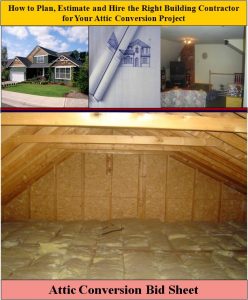Simple Steps to Prevent Ice Damming
By Mark J. Donovan
|
|
Ice damming often leads to water damage in a home. Exterior soffits can rot or tear away due to ice dam build up. In addition, water can back up under shingles and cause water damage to the roof sheathing and destroy the shingles. Moreover ice dams can cause major roof leaks that can destroy drywall ceilings.
Ice damming is a common problem in northern climates. Ice dams occur because of inadequate or poorly installed insulation, and the lack of proper ventilation in the attic. When these conditions occur, warm moist air from the below living areas heats up the roof sheathing, which then melts the underside layer of snow on the roof. |
From there the melted snow water works its way down to the roof eaves and roof valleys where the ice dams form.
Ice dams typically occur at roof eaves and roof valleys. With roof eaves snow melt higher up on the roof melts from the underside and drips down towards the roof edge (or eaves). As the melted snow water reaches the roof eaves it freezes. As this process continues it backs up under the shingles and finds a way into the attic. From there the water works its way onto attic insulation and drywall ceilings. The story is pretty much the same with roof valleys.
Summarized below are the two main steps to prevent ice damming.
| Adequately and Properly Install Attic Insulation
One of the key steps to preventing ice damming is to ensure the attic temperature is equal to the outside temperature at all times. Thus it is imperative to prevent warm moist air from the lower living areas of the home to permeate up into the attic. To do this you need to install the proper amount of attic insulation for your climate region. For example, in the New England area R-38 insulation should be used in attics. |
 |
Secondly, the insulation needs to be installed properly so that there are no gaps that could allow warm moist area from the below living areas to seep up into the attic.
Ensure Proper Attic Ventilation
The second major step to preventing ice damming is to ensure there is proper attic ventilation. Even with adequate and properly installed insulation there will be some minor moist warm air leakage into the attic. The trick is to remove that warm moist air from the attic as quickly as possible. To do this there needs to be adequate soffit and ridge vents/gable vents installed in the attic. The soffit vents help to enable cooler air to be drawn into the attic. The ridge vents, or gable vents, on the other hand allow warm moist air to rise up out of the attic.
Similarly install Ice and Water Shield in the roof valleys. The Ice and Water shield should extend outwards from the roof valleys by about 18 inches.
For help on Attic Conversion and Attic Renovation Projects, see HomeAdditionPlus.com’s Attic Conversion Bid Sheet. The Attic Conversion Bid sheet will help to ensure that you hire the right contractor so that your attic conversion project is built correctly, on time and budget.
Related Information
- How to Ensure Proper Attic Ventilation
- How to Prevent and Deal with Attic Moisture
- Why Frost is Forming in Your Attic
Additional Attic Conversion and Home Remodeling Design Resources
 |
 |
Free Home Addition / Attic Conversion Price Quotes with No Obligation!
Fill out our 3-5 minute quick and easy form, and receive a free price quote on a attic conversion from one of our pre-screened and licensed home remodeling contractors. This process is free and there is no obligation to continue once you receive your attic conversion price estimate.

